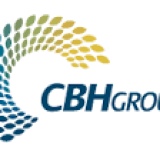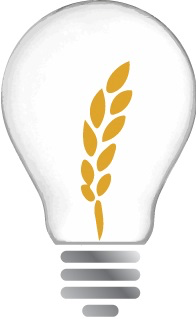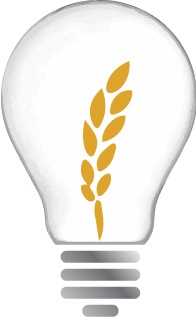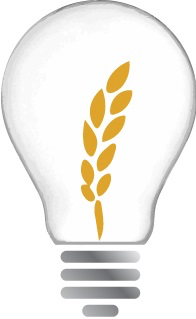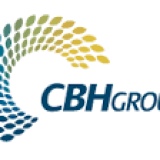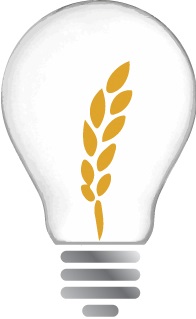Information
-
Document No. 1721981-v9-CBH
-
Audit Title: CBH Contractor General Induction Checklist
-
CBH Group
-
Conducted on
-
L. Gamble
-
Perth
-
Personnel
1. Introduction
-
The CBH Contractor General Induction is to be completed prior to commencing work on a CBH site. It can be delivered by anyone who has a good understanding of CBH requirements and the day to day operations around our sites. The CBH Group has a Duty of Care to provide and maintain a working environment in which employees, contractors and the community are not exposed to hazards. It also has a responsibility to communicate these hazards to people conducting activities on our sites. Inductions are a way to communicate consistent information to help ensure it is understood. Contractors will be required to complete the online induction and meet the requirements of SitePass prior to commencing work with CBH. It is also important to provide a face to face site induction to reinforce some of the information provided previously. Any potential risks that relate to the particular site that the work is to be carried out shpuld be highlighted. This should occur whenever a contractor arrives at a site. The amount of Site Specific information that will be required to be discussed will depend on the individual site. A guide to the type of Site Specific Information can be found in Section 4. Some of the information found in this guide is replicated in the online induction, but it is important to ensure the important elements are understood.
2. How to use this guide
-
This booklet is a guide to assist in the site induction of contractors. The information contained can be read word for word or it can be used as a guide. The record of this induction is to be recorded on the “CBH Contractor General Induction Checklist” form – DRMS# 1732411. This record will need to be completed for each contractor that starts at a CBH Site. This record of the induction should be entered into the induction register which can be found on connect at http://connect/our-teams/grain-operations/site-connect/Pages/Induction-Register.aspx. Completed checklists should be retained by the Responsible Line Manager (and filed in the Regional Office). Section 4 of this guide describes the type of information that should be shared with any visitor to a CBH site. This would need to be communicated the first time a person visits site, and then as required (site conditions change, new traffic flow is in place). This discussion should be recorded on the Contractor Site Specific Induction form and filed in the weighbridge. When the Contractor has been inducted, they must initial the appropriate boxes on the CBH Group Contractor Site Induction Checklist” and sign the form to demonstrate that they have been inducted & understand CBH’s safe systems of work. If a person is unable to comply with the requirements outlined in this guide then any identified risk will need to be managed. Employees / contractors should be aware of the standards, policies and procedures relating to the scope of their work. This should have been identified during the planning for the task. Remember to explain all of the hazards associated with the job that contractors are to perform i.e. dust on ladders, working at heights etc. If an item does not seem relevant please explain it anyway, as it may be relevant on another site.
3. Induction
3.1 CBH GROUP INDUCTION CARD (SITEPASS)
-
• The online induction and the SitePass requirements must be completed prior to commencing work and completing this induction. Once the requirements are met, a CBH Group Induction Card is issued. • If the contractor has not completed the online induction then they will need to be supervised at all times until the induction is completed. • If the intended task is an emergency and it is unreasonable to have the contractor supervised at all times, or complete the necessary Site Pass requirements, then it is possible to issue a “Contractor Permit to Work” (Docs#429344).
3.2 MARITIME SECURITY IDENTIFICATION CARD (MSIC)
-
• Anyone working within a secure area of a Port, Ship or offshore oil and gas facility is required to display an identification card known as a Maritime Security Identification Card (MSIC). • A MSIC is required to work in certain areas of our ports. • The contractor should have had to provide a copy of the card during the SitePass process. • The card is required to be on display at all times whilst in the secure area.
3.3 CONSTRUCTION CARD
-
• The Occupational Safety and Health Regulations 1996 set out mandatory requirements for the provision of construction safety induction training, for employees or self-employed people doing construction work at a workplace in Western Australia. • Construction Induction Cards (Blue or White Cards) are applicable at all construction sites on CBH premises.
3.4 TAKE 5
-
• Take 5’s are a tool to help us to stop and think about what we are doing before we do it, even when we are performing routine, simple and day-to-day tasks. • Take 5’s shall be completed prior to commencing a task, when the scope of work changes as well as after any breaks to identify any changes in the identified risks. • If the contractor does not have their own Take 5 template, provide them with one of our books.
3.5 JOB SAFETY ANALYSIS
-
• JSA’s are undertaken to help us plan and undertake work safely to prevent injuries. • JSA’s help us think through tasks in more detail when compared to a Take 5, and help us make sure that right controls are in place to prevent injury. • A JSA should be completed or reviewed at the work front to ensure it is relevant. • A JSA shall be completed if the Take 5 has resulted in a Medium or High risk response rating. • If the contractor does not have their own JSA template, provide them with one of our books.
3.6 LIFE SAVING RULES
-
• The CBH Group Life Saving Rules proactively prevent injuries occurring from high risk tasks and dangerous activities at CBH. • The consequence of breaching a Life Saving Rule is that that person will need to “show cause” why their employment and / or their approval to work on CBH sites shouldn’t be terminated. • Life Saving Rule # 1 - Areas Under Fumigation Unless authorised by a Licensed Fumigator, no person shall enter a grain storage or any area that is under fumigation. • Life Saving Rule # 2 - Isolation of Energy No person shall work on or enter any equipment that has not been isolated from all sources of energy unless specifically permitted by an approved procedure for testing, commissioning or hygiene purposes. • Life Saving Rule # 3 - Drugs and Alcohol No person shall bring, use or be under the influence of illicit drugs on any CBH premises. No person shall operate any vehicle (company owned or personal) on a CBH site or on company related business activities, in excess of prescribed statutory limits for alcohol. • Life Saving Rule # 4 - Mobile Phones Hand held operation of mobile phones is not permitted by a person in control of a vehicle (company owned or personal) on a CBH site or on company related business.
3.7 SMOKING GUIDLINES
-
• Due to the potentially explosive nature of grain dust, smoking in and around grain storages and grates / grids is STRICTLY PROHIBITED at all times. • Grain is a food product and so cigarette butts are a contaminant of grain quality. • Smoking can only occur in Designated Smoking Areas.
3.8 FUMIGATION (Life Saving Rule #1)
-
• When a grain storage area is under fumigation, ‘Danger – Under Fumigation’ signs will be in place to warn people working on site. • If a grain storage area is in the process of being fumigated, an exclusion zone of at least 3m is required around the storage. ‘Restricted Area – Fumigation in Progress No Unauthorised Entry Permitted’ signage and barricading should be in place. • In the event you smell garlic like odour coming from the storage area you may be in the presence of a fumigant. You should vacate the site/area and advise a CBH staff member or management of its presence.
3.9 PERMITS TO WORK
-
• The CBH Group have a number of Permits and Certificates that are used to control high risk activates on site. • Hot Work Permit • Confined Space Permit • Excavation Permit
3.10 GRAIN DUST HEALTH
-
• Grain dust occurs mainly through the impact or abrasion of grain when it is moved. • Ensure that the correct personal protective equipment such as dust masks and safety glasses / goggles are used where required. • Asthma sufferers may be at an increased risk of an asthma attack if exposed to excess levels of dust without the correct PPE.
3.11 ELECTRICAL DEVICES
-
• All electrical devices shall be plugged into an RCD protected socket. • All electrical leads and power tools must be inspected prior to use, ensuring the tool and the power leads are in good condition and free of damage. • Portable electrical equipment is required to be tested and tagged. • If electrical equipment doesn’t have an electrical inspection tag or the tag is out of date, tag the equipment “Out of Service” and inform your Supervisor. • If upon inspection, an electrical cord or appliance appears to be damaged – immediately tag the equipment “Out of Service” and inform your Supervisor.
3.12 TRAFFIC MANAGEMENT
-
• Unless sign posted otherwise, the speed limit is not to exceed 20km/hr. All vehicles operating on CBH Group sites must comply with the posted speed limits. • All vehicles must comply with the traffic management plan as identified by signage and / or road markings.
3.13 HIGH RISK WORK LICENSES
-
• High Risk Work Licenses are required for all persons who will operate certain machinery / vehicles / plant. Under no circumstances are they to operate machinery / vehicles / plant for which they are not licensed. • A person requires a high risk work licence to perform:
-
o Scaffolding - basic, intermediate and advanced; o Rigging work - dogging; basic, intermediate and advanced rigging; o Crane and hoist operation - tower; self-erecting tower; derrick; portal boom; bridge and gantry; vehicle loading; non slewing mobile; slewing; materials hoist; personnel and materials hoist; boom-type elevating work platform; vehicle mounted concrete placing boom; o Forklift operation - forklift trucks; order-picking forklift trucks;
3.14 SITE FIRST AID EQUIPMENT & EMERGENCY RESPONSE
-
o CBH Weighbridges o CBH Network and Engineering Site Offices.
-
• Highlight or point out muster points and emergency contacts. Contractors are to make their employees / subcontractors aware of these processes and procedures.
-
• Contractors are required to supply their own First Aid Kits that are appropriate in size and content for the workplace and the risks involved with the type of work to be undertaken. • The contractor is also responsible for ensuring that appropriate people have the correct level of First Aid Training. • CBH First Aid Kits and Trauma bags are located in the:
3.15 INCIDENT & INJURY REPORTING
-
• All incidents, accidents, near misses and hazards must be reported immediately to the CBH representative on site, as soon as they occur. • If a CBH representative is not on site, then the contractor must report the incident to their CBH contact.
3.16 PERSONAL PROTECTIVE EQUIPMENT (PPE)
-
• The minimum PPE for working on site includes;
-
o Eye protection – safety glasses; o Foot protection – safety footwear with appropriate ankle and toe cap protection; o Protective clothing – long trousers, long sleeved shirt and hat; and o Reflective high visibility shirt or vest.
-
• Contractors are to supply appropriate PPE and training to their employees where applicable.
3.17 FIRE EXTINGUISHERS
-
• Contractors should supply their own fire extinguishers, applicable to the type of work and risks involved. • Ensure that fire extinguishers and equipment are available on site, and that the Contactors are aware of their location.
3.18 OPERATION OF MOBILE PLANT / MACHINERY
-
• High visibility shirts or reflective vests must be worn when working around mobile equipment • Do not allow road trucks to depart until everyone is well clear. • Drivers to adhere to speed and traffic signs. • Discuss & highlight the traffic flow on site. • Ensure the operator is aware of your location at all times when working around mobile machinery. • Highlight the importance & process for managing people plant separation on site. The use of barricades, bunting and signage should be encouraged.
RAIL
-
• At all times, employees and contractors must stay well clear of rail lines to prevent serious injury. A 3m exclusion zone exists on either side of the rail line. • Personnel must work expecting rail vehicle movements on any track from either direction at any time and act accordingly to protect themselves. • Any person observing any incident, damage, or other condition that may affect the safety of the railroad, must: Immediately report to the Responsible CBH Supervisor. • Wagons may move without warning, and due care must be taken when working / passing through these areas. • Personnel not in the course of their normal duties are prohibited from:
-
o Climbing over, under or between locomotives or rolling stock o Using locomotives or rolling stock as shelter o Only authorised personnel are permitted to work on or near railroad tracks. o Personnel are not to board any locomotives or rolling stock at any time unless instructed and authorised. o Personnel are not to drive any plant or machinery over any section of rail unless it is identified as a crossing.
CONVEYORS / TRIPPERS / STACKERS
-
• A tripper is a large funnel device mounted on a conveyor. The tripper is used to control the directional flow of grain as it is transported from one part of a receival depot to another. • No work is to be carried out directly on a conveyer / tripper / stacker unless it is isolated. Personnel should keep clear of operating conveyers and stackers due to the risk of injury.
3.19 ELEVATED WORK
-
• Due care must be taken when required to work at height. • Any work required at height, when designated walkways are not available, must be completed using the correct fall protection equipment by qualified personnel. • The danger of equipment and tools being dropped from height must be considered with any work being conducted above ground level. • Area should be bunted off where required, taking into account the height that work is being carried out at. • EWP Logbooks are maintained on a daily or by use basis, and the responsible supervisor signs off the plant logbook in the relevant daily inspection entry area, to verify the operators have carried out an inspection and completed the plant logbook as required.
3.20 HAZARDOUS AREAS
-
• At CBH, grain dust explosions are a significant risk to our operations. • Avoiding activities that are likely to cause grain dust clouds. • Control activities that can produce an ignition source (e.g. welding, grinding). • Mobile plant and machinery must not be stopped and started in sealed storages. • Examples of areas that are classified as hazardous include:
-
o inside hoppers, silos, “cyclones”, chutes, elevators, conveyor transfers and dust systems. o the vicinity around areas of containment – outside filling and emptying points, truck / rail dump stations, conveyor transfer, inspection doors and where dust accumulates etc. The extent of the zone can be to the boundaries of the building e.g.; workhouse floor. o Exit doorways (stairwells, storage doors, etc.) from hazardous areas.
-
• Hazardous areas are identified as “Zones 20, 21, and 22 for Combustible Dust” and are described in the plant classification documentation.
-
o Zone 20: Areas in which an explosive atmosphere, in the form of a cloud of combustible dust in air, is present continuously, or for long periods or frequently for short periods of time. Areas of containment – inside hoppers, silos, “cyclones”, chutes, elevators, conveyor transfers, dust systems etc. o Zone 21: Areas in which an explosive atmosphere, in the form of a cloud of combustible dust in air, is likely to occur occasionally during normal operation. The vicinity around areas of containment – outside filling and emptying points, truck / rail dump stations, conveyor transfer, inspection doors and where dust accumulates etc. The extent of the zone can be to the boundaries of the building e.g.; workhouse floor. o Zone 22: Areas in which an explosive atmosphere, in the form of a cloud of combustible dust in air, is not likely to occur during normal operation but, if it does occur, will persist for only a short period only e.g.; breakdowns. Areas around Zone 21 exit doorways – stairwells, storage doors, etc. Mainly dependent on environmental conditions for the extent of the zone.
3.21 BOOTPITS AND ELEVATORS
-
• A boot pit is the bottom access area directly underneath a grid or elevator and is defined by CBH as a Restricted Work Space. It is possible that an area designated as a Restricted Area, may be treated as a Confined Space in certain circumstances. These could include when undertaking tasks within that Restricted Area that introduces additional hazards such as welding fumes, cleaning with chemicals, etc. • Before you enter a boot pit you must be trained in entering confined spaces. • Prior to entering a boot pit you should:
-
o Discuss the tasks with site supervisor and determine if the pit is a confined space or a restricted space as defined by CBH. o If it is a confined space you should complete a Permit to Work. o Sign on to the JSA. o Be trained in confined space entry. o Comply with the Safe Work Procedure accessing Confined Space and Restricted Work Areas.
3.22 CONFINED SPACES
-
• A Confined Space Entry Permit must be issued prior to commencement of work in any confined space. • The permit must remain in the possession of a stand-by person while the work is being carried out. • All persons involved in a confined space entry must have completed an accredited CBH Confined Space Entry Course. • Entry must not be made without testing the atmosphere with a calibrated CBH Gas Detector.
3.23 TARPING
-
• Tarping is the process of sealing the stored grain with tarpaulins within a bulkhead. • Tarping is considered a high risk work activity and those who work with Tarps are required to have training and experience. A tarp, during a wind gust, has the force to lift and toss 20 people into the air. • Tarping Contractors perform inductions and specific training with their employees. In some instances a Tarping Contractor will induct other staff who will be working in and around their operational areas. • In the event another individual needs to enter into the area in which the Tarping Contractors are performing their work you should make contact with the Tarping Supervisor or leading hand to ensure that it is safe to enter.
3.24 PRESTART (MINUTED) & TOOLOX MEETINGS
Prestart Meeting (duration indication 10-15 minutes)
-
• Shift Pre-start meetings are aimed to help you get focused and provide a chance to find out what is going on around a work site for the coming work shift. • The meeting allows workers and supervisors to:
-
o Identify clashing timetables for scheduled work such as maintenance; o Monitor and communicate potential site risks associated with the shift activities, determine the effectiveness of appropriate controls and confirm they are in place; and o Track the progress of production, construction, maintenance and any changes that may emerge during the shift. o It may be beneficial for the contractors to join in with the site prestart meeting. This will increase the level of communication and information sharing between CBH and the contractors.
Toolbox Meetings (duration indication about 30 minutes)
-
• Toolbox Meetings occur on a regular basis such as fortnightly or monthly and typically last longer than the shorter shift-pre-start meeting. Toolbox meetings focus on a specific toolbox or safety topic and are an opportunity for staff to have an interactive discussion on this topic.
3.25 ENVIRONMENTAL
-
• It is essential that we take appropriate actions to protect air, water, animal and plant life from adverse effects of our activities. • The control of spillages is especially important due to grain being a food product. Spillages will be controlled in the first instance and clean-up implemented as soon as possible. • It is the responsibility of everyone who undertakes work for the CBH Group to conduct their activities in an environmentally responsible manner.
3.26 ISOLATION OF PLANT AND EQUIPMENT (Life Saving Rule #2)
-
• Under NO circumstances should anyone remove or ignore “Danger” or “Out of Service” Tags unless authorised to do so. • Machinery must be tagged and isolated by an authorised person. • The Contractor is to discuss with the CBH Representative the method of isolation. The CBH Representative or delegate WILL arrange isolation of plant prior to work if the contractor notifies this need with them PRIOR to any work. • No-one should perform isolations on plant and equipment unless deemed authorised. • The 8 steps of isolation, tag and lockout must be undertaken for each item of plant or equipment, as follows:
-
1. Identify all energy sources and hazards; 2. Shut down the plant; 3. De-energise all energy sources; 4. Isolate and lock out all energy sources; 5. Control other potential hazards; 6. Tag plant controls, energy sources and other potential hazards; 7. Test by ‘trying’ to re-activate the plant and; 8. Remove locks and tags, reactivate plant.
4. Site Specific Information
4.1 TRAFFIC MANAGEMENT PLANS
-
Provide the contractor with a copy of the sites Traffic Management plan if required. Highlight any significant risks relating to; • Vehicle movement, (out loading, intra silo movements, FELs etc.) • People plant separation • Parking areas • Any other relevant information regarding traffic management.
4.2 EMERGENCY PREPAREDNESS PLANS
-
Provide a copy of the emergency preparedness plan for the site if relevant and highlight the locations of fire extinguishers, first aid kits etc. Ensure the inductee is aware of what to do in the event of an emergency.
4.3 CONTACT DETAILS
-
Provide the contractor with the contact details of the relevant people involved with the site.
4.4 OPERATIONAL ACTIVITIES
-
Discuss potential and actual operational interactions between different work groups. This could involve interactions with mobile plant and equipment, different work groups working above or below each other or in the same enclosed area.
